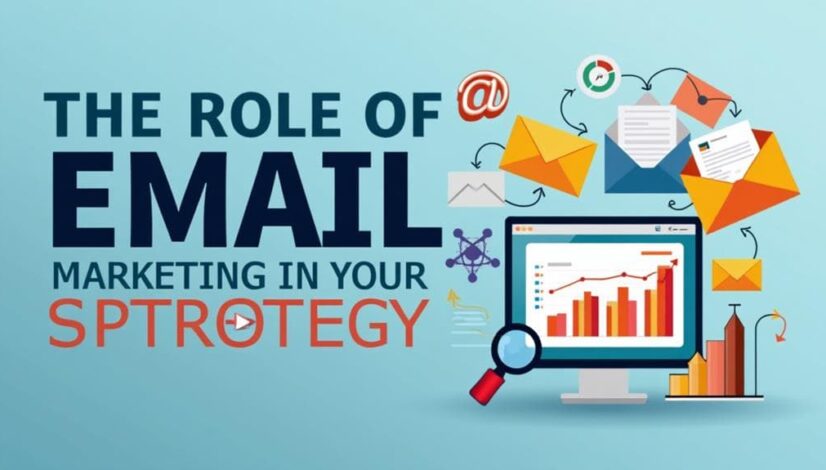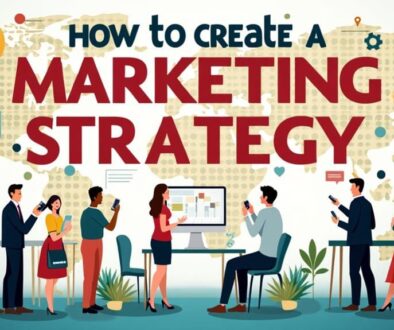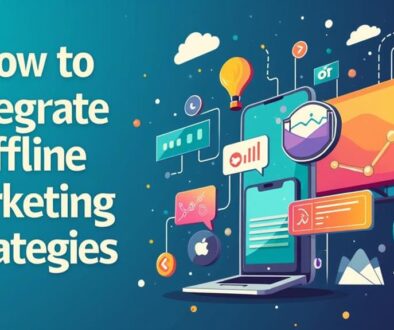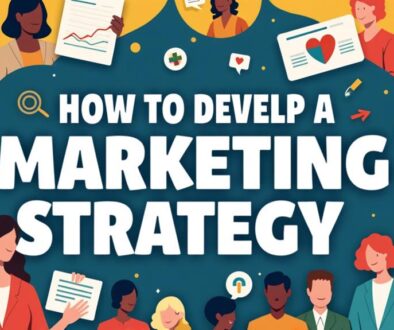The Role of Email Marketing in Your Strategy
Email marketing plays a pivotal role in a well-rounded marketing strategy by facilitating deeper customer engagement and relationship-building. It effectively nurtures leads through personalized content and segmented communication, fostering loyalty and trust. Strategic email design, coupled with clear calls to action, enhances audience interaction and conversion rates. Additionally, automation streamlines workflows, ensuring timely communications that resonate with customer behavior. By systematically analyzing success metrics like open and click-through rates, marketers can refine their approaches for peak performance. Exploring these elements further can reveal how to leverage email marketing to its fullest potential.
Key Takeaways
- Email marketing enhances audience engagement through personalized content and segmentation, driving higher conversion rates.
- Consistent campaign frequency helps retain customers and nurture relationships over time.
- Automation streamlines communication, allowing for timely messages tailored to user behaviors and preferences.
- Measuring success metrics like open rates and click-through rates informs strategies for ongoing improvement and engagement.
- Best practices, such as compelling subject lines and mobile optimization, maximize the effectiveness of email marketing efforts.
Understanding Email Marketing

Understanding email marketing requires an in-depth exploration into its fundamental principles and strategic applications. At its core, email marketing is not merely the act of sending promotional messages; it is a dynamic interplay between design, consumer engagement, and compliance.
Successful email campaigns hinge on meticulously crafted email design, which encompasses everything from layout and color schemes to typography and imagery. Well-designed emails engage recipients effectively, capturing their attention while fostering brand recognition.
Additionally, adherence to compliance regulations is paramount in email marketing. Legislation such as the CAN-SPAM Act and GDPR imposes strict requirements on how businesses collect and manage subscriber information, impacting their ability to communicate freely with their audience.
Understanding these regulations not only guarantees that businesses operate within legal boundaries but also builds trust with consumers, as they appreciate transparent marketing practices. Freedom in marketing is contingent on respecting these constraints; when compliance is prioritized, brands can enjoy more latitude in their messaging.
Strategically, email marketing requires a multi-faceted approach that encompasses audience segmentation and personalized content. Tailored messages resonate more deeply with recipients, driving engagement and conversions.
Benefits of Email Marketing
Email marketing offers a multitude of advantages that can greatly enhance a brand's outreach and engagement capabilities. With deliberate strategies in place, businesses can leverage this powerful tool to foster deeper connections with their audience while maneuvering through the competitive digital landscape.
Here are three key benefits of email marketing:
- Audience Engagement: Strategically designed emails that incorporate diverse content varieties can greatly increase audience engagement. By utilizing compelling email design, businesses guarantee that their messages resonate with recipients.
- Customer Retention: Consistent campaign frequency plays an essential role in maintaining customer relationships. By implementing effective re-engagement strategies, brands can recover potentially lost customers while adhering to compliance regulations to protect customer data.
- Performance Optimization: A/B testing allows marketers to refine their messaging and design strategies. By analyzing deliverability issues and confirming list hygiene, businesses can enhance their email performance metrics, ultimately leading to improved return on investment.
Implementing these strategies not only promotes customer retention but also bolsters overall brand presence.
Email marketing provides an engaging platform for tailored communication that fosters accountability and a sense of community among audiences. Free from the clutter of social media, email delivers direct messages that clearly articulate value, driving action and conversions.
Building Your Email List

To build a robust email list, businesses must adopt strategic approaches that prioritize genuine engagement with potential subscribers. Substantial growth in your email list hinges on your ability to provide distinct value.
One effective method is leveraging lead magnets—irresistible offers that compel users to share their email information in exchange for something of value. This could take the form of exclusive content, e-books, webinars, or discounts. By aligning these incentives with your target audience's interests, you not only enhance subscriber quality but also foster a more committed relationship.
Moreover, a strong emphasis on list hygiene is essential for maintaining the integrity and effectiveness of your email list. Regularly cleaning your list guarantees you retain engaged users while eliminating those who may have become inactive or irrelevant.
This involves monitoring engagement metrics, segmenting your audience, and removing emails that bounce or consistently underperform. A well-maintained email list not only improves deliverability but also enhances your reputation with email service providers, allowing your campaigns to reach a broader audience.
Crafting Compelling Content
Compelling content is the cornerstone of any successful email marketing campaign, serving as the critical link between brands and their subscribers. Crafting this content requires a strategic approach that resonates with diverse audience personas while embodying the brand voice.
To achieve this, consider the following essential elements:
- Engaging Visuals: Incorporate design elements that captivate your audience. A well-designed email not only draws attention but also enhances the message.
- Storytelling Techniques: Use narratives that connect emotionally with your readers. Employing storytelling techniques can evoke emotional triggers that lead to increased engagement and loyalty.
- Frequency Balance: Maintain a consistent yet varied content types schedule that keeps subscribers intrigued without overwhelming them. Striking the right frequency balance is key to sustaining interest over time.
Furthermore, integrating user-generated content can add authenticity and foster a sense of community. Each email should incorporate a clear call to action that directs subscribers toward a meaningful next step, be it engaging with content, making a purchase, or participating in a survey.
In essence, the art of crafting compelling content in email marketing lies in blending creativity with analytical strategy. By leveraging engaging visuals, effective storytelling, and a focus on emotional resonance, brands can forge stronger connections with their audience while driving actionable results.
This holistic approach not only enhances brand loyalty but also transforms mere transactions into lasting relationships.
Segmentation and Personalization
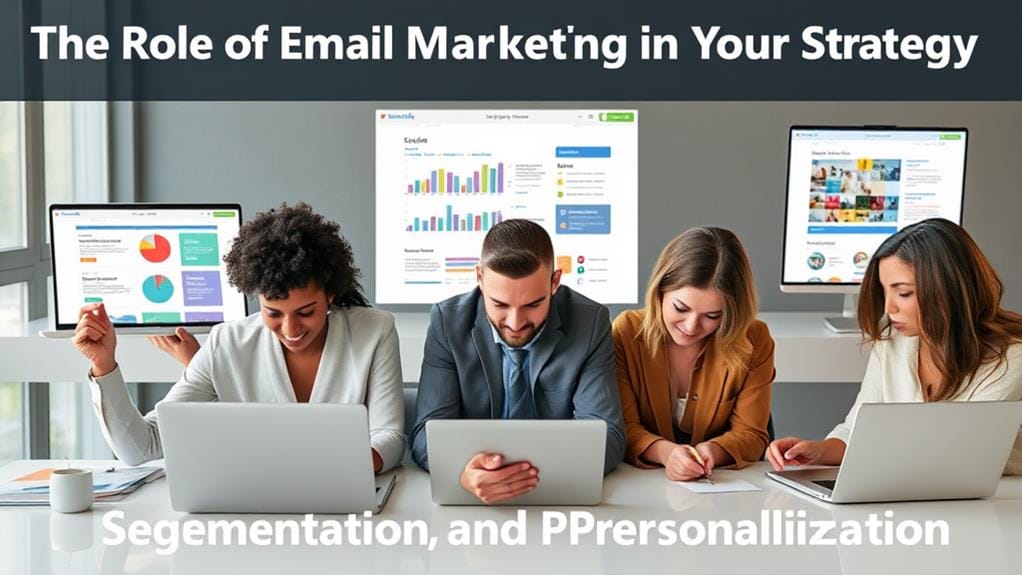
Effective email marketing goes beyond just creating engaging content; it requires a strategic approach that considers the diverse preferences and behaviors of subscribers. By implementing segmentation and personalization tactics, businesses can guarantee that their campaigns resonate deeply with their audience.
Utilizing demographic insights allows marketers to group users based on age, location, and interests, resulting in more relevant content and improved engagement strategies.
Moreover, analyzing behavioral triggers enhances the effectiveness of email campaigns. For instance, triggering emails based on purchase history enables brands to suggest complementary products, thereby increasing conversion rates. Similarly, integrating information from loyalty programs can personalize offers, making subscribers feel valued and understood.
Timing optimization plays a vital role in this process as well. By understanding customer journeys and identifying the ideal moments for outreach—such as after a purchase or when a subscriber has shown certain interests—marketers can boost engagement rates considerably.
Data analysis is foundational to segmentation and personalization. Insights gleaned from user preferences guide content relevancy, guaranteeing that each email speaks to the individual, rather than adopting a one-size-fits-all approach.
Automation in Email Campaigns
In today's fast-paced digital landscape, automation has become a cornerstone of successful email marketing campaigns. By leveraging automation tools, marketers can enhance customer engagement, streamline processes, and allow for greater strategic focus on nurturing leads.
Effective automation transforms an ordinary email campaign into a robust system for building relationships.
Here are three key benefits of automation in email campaigns:
- Efficient Email Workflows: Automation enables the creation of seamless email workflows that guarantee the right messages are delivered at the right time. These workflows can segment audiences, allowing for targeted, relevant content that resonates with individual preferences.
- Trigger Campaigns: Automation facilitates trigger campaigns, which are contingent upon specific customer actions or milestones. For example, if a customer abandons their shopping cart, an automatic reminder email can be dispatched, capturing potential lost revenue and reinforcing customer interest.
- Drip Sequences and List Nurturing: With drip sequences, businesses can deliver a series of pre-scheduled emails, gradually nurturing leads through the sales funnel. This personalized messaging cultivates stronger relationships and enhances the likelihood of conversion.
Measuring Success Metrics
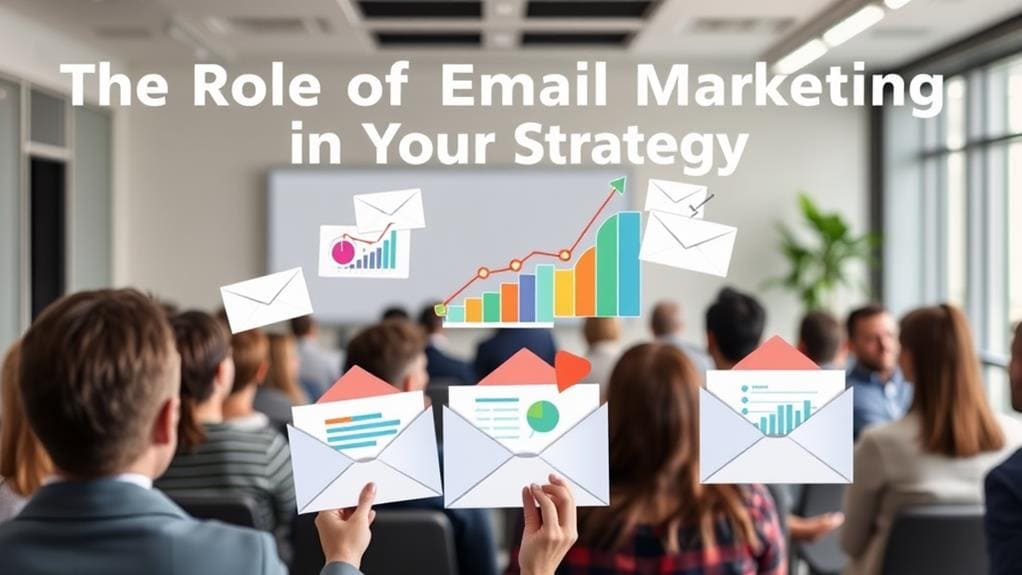
Measuring success metrics is essential for evaluating the effectiveness of an email marketing campaign.
Key indicators such as open rates and click-through rates provide insights into audience engagement and the overall impact of your messaging strategy.
Open Rate Importance
An email's open rate serves as a critical indicator of engagement, reflecting the initial interest and curiosity of recipients toward the content within. This metric not only gauges audience attention but is also instrumental in evaluating the effectiveness of your open rate strategies.
To fully leverage open rates, consider the following tactics:
- Compelling Subject Lines: Craft attention-grabbing subject lines that resonate with your audience's needs and interests.
- Personalization: Utilize personalized messaging to create a connection with recipients, enhancing the likelihood of opens.
- Segmentation: Implement email segmentation to deliver more relevant content to specific groups, thereby optimizing engagement.
Click-Through Rate Analysis
Understanding open rates sets the foundation for analyzing click-through rates (CTR), as both metrics collectively reflect user engagement and content effectiveness.
Click-through rate analysis is vital for identifying the strengths and weaknesses of your email campaigns. Effective click-through optimization hinges on understanding audience behavior and aligns directly with content relevance, guaranteeing your messages resonate with recipients.
Conducting an engagement analysis can unearth patterns related to campaign timing, revealing when your audience is most likely to engage. This intelligence allows for strategic scheduling to boost CTR further.
Additionally, design impact plays a pivotal role; aesthetically compelling emails with clear calls to action can greatly enhance click-through performance.
Incorporating conversion tracking guarantees that the analysis extends beyond clicks alone, measuring how those clicks translate into desired actions, such as purchases or sign-ups.
Employing testing strategies, including A/B testing, can actively refine your approach, tailoring content and design elements to better meet audience expectations.
Ultimately, combining these techniques will empower marketers to harness the full potential of their email strategies, maximizing both engagement and conversion rates.
Best Practices for Email Marketing
Implementing best practices in email marketing is essential for maximizing engagement and achieving strategic goals.
Key tactics include effectively segmenting your audience to guarantee relevance, crafting compelling subject lines to enhance open rates, and optimizing content for mobile devices to accommodate user preferences.
Segment Your Audience Effectively
Effectively segmenting your audience is essential for maximizing the impact of your email marketing efforts. By employing strategic techniques such as data-driven segmentation, you can tailor your communication to meet the specific needs and preferences of your subscribers.
Consider the following key strategies to enhance your segmentation efforts:
- Audience Demographics: Analyze the age, gender, location, and other demographic factors to create targeted campaigns that resonate with specific groups.
- Behavior Analysis: Assess past interactions and purchasing behaviors to inform your engagement strategies. Understanding how your audience behaves allows you to time messages efficiently and promote relevant content.
- Interest Targeting: Utilize psychographic profiling to identify interests and values, enabling you to craft personalized messages that amplify subscriber engagement.
Craft Compelling Subject Lines
Crafting compelling subject lines is pivotal to the success of any email marketing campaign. Understanding subject line psychology can enhance engagement by tapping into emotional triggers. Employing urgency tactics, such as highlighting time-sensitive offers, can propel recipients to act quickly, while personalization strategies that incorporate the recipient's name personalize the interaction, fostering a sense of connection.
A/B testing is instrumental in fine-tuning your approach; it allows marketers to experiment with different styles and tones, enabling data-driven decisions. Keeping character limits in mind guarantees that your compelling message is effectively communicated across devices, as truncated lines can diminish impact.
Incorporating brand consistency and seasonal themes can resonate more with your audience, aligning messaging with current interests and sentiments. Additionally, humor usage can be a delightful surprise that captures attention and differentiates your emails in an overcrowded inbox.
Ultimately, leveraging audience insights will provide a clearer perspective on what resonates with your target demographic, allowing for impactful subject lines that align with their desires and enhance open rates.
Optimize for Mobile Devices
With approximately 50% of all email opens occurring on mobile devices, enhancing email marketing for mobile is no longer optional; it's essential.
Businesses must prioritize mobile responsiveness to guarantee effective communication and enhance user experience.
To achieve peak mobile performance, consider the following best practices:
- Responsive Design: Emails should automatically adapt to various screen sizes. A responsive design guarantees content remains readable and visually appealing, regardless of device.
- Concise Content: Mobile users prefer short, impactful messages. Crafting succinct text with clear calls to action facilitates engagement and improves the likelihood of conversion.
- Touch-Friendly Elements: Confirm buttons and links are easily clickable. A 44-pixel minimum touch target will provide a seamless experience and reduce the frustration of misclicking.
In a world where users prioritize convenience and accessibility, your email marketing strategy must reflect these values.
By enhancing for mobile devices, not only do you cater to a growing audience, but you also empower users, fostering a sense of freedom to engage with your content on their terms.
Embracing mobile enhancement establishes your brand as forward-thinking and responsive to the needs of modern consumers.
Frequently Asked Questions
How Can I Ensure My Emails Avoid Spam Filters?
To guarantee your emails avoid spam filters, focus on crafting compelling email content that resonates with your audience.
Design clear, engaging subject lines and maintain a strong sender reputation by adhering to best practices.
Prioritize list hygiene to remove inactive subscribers and improve engagement metrics.
Additionally, employ personalization tactics to create tailored experiences, prompting higher interaction rates and fostering trust, ultimately enhancing deliverability and minimizing the risk of being marked as spam.
What Is the Average ROI for Email Marketing Campaigns?
The average ROI for email marketing campaigns typically ranges from $36 to $44 for every dollar spent, underscoring its efficiency as a marketing channel.
Key factors influencing this metric include email engagement rates and conversion metrics. High engagement is essential for driving conversions, which in turn enhances ROI.
How Often Should I Send Emails to My Subscribers?
Determining the ideal frequency for sending emails to subscribers involves balancing engagement and avoiding fatigue.
Generally, a bi-weekly to monthly schedule is effective for maintaining subscriber engagement while respecting their inbox.
Monitor key metrics such as open rates and click-through rates to gauge responsiveness.
Additionally, segmenting your audience may allow for tailored frequencies, ensuring messages resonate without overwhelming recipients.
Ultimately, remaining adaptive and responsive to subscriber preferences fosters sustainable engagement and brand loyalty.
What Software Tools Are Best for Managing Email Marketing?
To effectively manage email marketing, consider leveraging software tools that emphasize email automation and list segmentation.
Platforms such as Mailchimp, HubSpot, or ActiveCampaign provide robust features for automating campaigns and tailoring communication based on subscriber behavior.
By utilizing these tools, organizations can enhance engagement, optimize conversion rates, and deliver personalized content, ultimately fostering greater autonomy among recipients in choosing how they interact with your brand.
Strategic implementation of these tools can drive significant results.
Can I Use Email Marketing for B2B Audiences Effectively?
Yes, email marketing can be effectively utilized for B2B audiences.
By understanding your target audience's specific needs and preferences, tailored content personalization becomes essential.
Strategically crafting messages that resonate with these professionals fosters engagement and builds relationships.
Significantly, leveraging insights from data analytics enhances the relevance of your campaigns, ensuring your content not only informs but also empowers your audience, ultimately driving business growth and fostering meaningful connections within the industry.
Conclusion
In the domain of digital marketing, email marketing emerges as a critical component, often underestimated in its efficacy. Contrary to the notion that social media dominates consumer engagement, research consistently demonstrates that email yields a higher return on investment. By leveraging strategic segmentation, compelling content, and automation techniques, businesses can cultivate meaningful relationships with their audience. Embracing email marketing not only enhances customer retention but also drives conversions, ultimately reinforcing its pivotal role within an all-encompassing marketing strategy.
